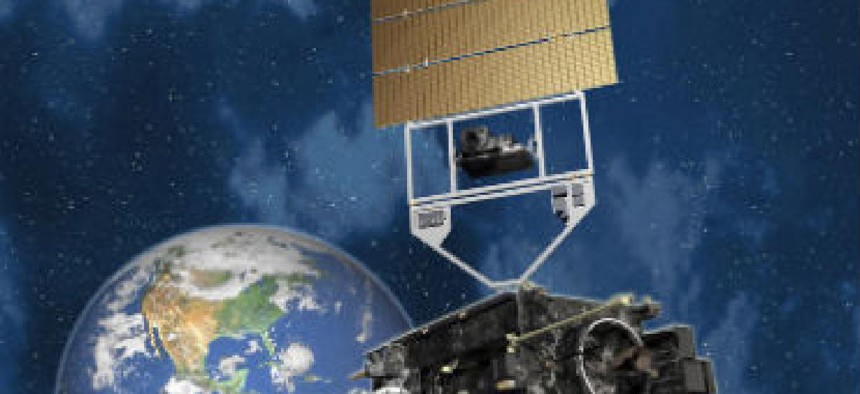NOAA budget boost focused on data

The largest request for NOAA's five offices is the National Environmental Satellite, Data and Information Service, which would get an increase of about $165 million over fiscal 2014.

NOAA's Geostationary Operational Environmental Satellite program is one of several focal points in the agency's fiscal 2015 budget request.
The National Oceanic and Atmospheric Administration's 2015 budget request emphasizes environmental intelligence, and includes increases for its data-intensive next-generation satellite programs and IT infrastructure upgrades to fully utilize the raw data the agency produces.
Overall, NOAA's budget request totals $5.5 billion, a 3.2 percent over its 2014 enacted budget.
The largest request for NOAA's five offices is the National Environmental Satellite, Data and Information Service, which manages the procurement, launch and operation of all civilian environmental satellite.
NESDIS would receive $2.2 billion under the budget request, an increase of about $165 million over last year's totals, with the lion's share going to the development of its two next-generation satellites. The Joint Polar Satellite System satellite is set for launch in early 2017, and the first Geostationary Operational Environmental Satellite is on course to launch in early 2016. Combined, the next-gen satellite systems will cost about $22 billion. The first GOES-R satellite alone will produce 40 megabytes of data per second.
"NOAA is one of the most valuable service agencies in the U.S. government," said Kathryn Sullivan, undersecretary of Commerce for oceans and atmosphere and NOAA administrator.
The National Weather Service, NOAA's second-largest office, would receive $1.06 billion, a $3.9 million decrease from fiscal 2014. The decrease in funding will hinder some expected advancements in the NWS' predictive capabilities, including an $8 million hit to its Hurricane Forecast Improvement Project, "which will delay advancements in hurricane forecast track and intensity," according to budget documents.
Yet NWS will receive $6 million in additional funding for its Ground Readiness Project, which is designed to improve the NWS IT infrastructure. As it exists today, NOAA produces more data – and that data volume will grow significantly in the coming years – than NWS systems can process.
NWS will also get an extra $5 million to re-architect its telecommunications gateway, which distributes weather products to thousands of customers across the world. NOAA's transition to a new IT service delivery model for forecast offices in fiscal 2014 realized the agency $10 million in efficiency savings, according to the 2015 budget request.
NEXT STORY: One DHS remains a work in progress






